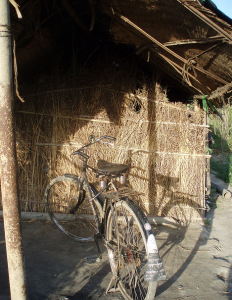Here in the Baltimore Washington metro area, as we continue to prepare for Hurricane Sandy, I’m reminded of some of the “BRANDING HURRICANES” I’ve experienced as a marketer.
 Hurricane Sandy has been slow moving, and the states in the path of the storm have had several days to prepare. The utility companies have brought in back-up support. The state and local leadership teams have established in-depth, informative websites with links to key information. Residents in the affected areas have rushed to the stores to stock up on flashlights and water. But how many times will we have this much “advance notification” of a pending disaster?
Hurricane Sandy has been slow moving, and the states in the path of the storm have had several days to prepare. The utility companies have brought in back-up support. The state and local leadership teams have established in-depth, informative websites with links to key information. Residents in the affected areas have rushed to the stores to stock up on flashlights and water. But how many times will we have this much “advance notification” of a pending disaster?
Branding disasters can take many shapes and forms ranging from simple customer service disasters or self-imposed marketing faux pas to incidents that impact the lives of your customers and/or employees. Now that we’re in the internet age, disasters can strike when we least expect them and they can happen fast! That’s why it’s essential that you have a disaster preparedness plan in place to ensure that everyone’s on the same page and you’re prepared with the appropriate response.
Step 1 – Implement Best Practices to “Weather the Storm”
This one is basic. Don’t build a straw house in a brick house zone. In other words, ensure that you are following established best practices in providing your service or constructing your product. This will take you a long way in weathering a storm. Whether you are manufacturing a product or providing a service, make sure that you have adequate quality control systems in place, and make sure that you stay abreast of the latest technology. Just think of all the buildings that have survived earthquakes because of the building and construction standards in place. Though it happened many years ago, I am reminded of Union Carbide’s Bhopal disaster, one of the largest industrial accidents in history, where half a million people were exposed to a deadly gas and thousands of lives were lost. Not only did they handle the PR following the disaster poorly, but in fact, the disaster occurred because of a horrendous disregard for safety and maintenance. Another rather basic example is the Titanic….imagine if they had equipped the ship with the proper number of life boats.
So…dot your i’s and cross your t’s when it comes to implementing best practices for your industry.
Step 2 – Monitor, Monitor, Monitor
Imagine what would happen if we didn’t have technology in place to know when a storm was coming. With the internet, we can implement monitoring systems so that we will be among the first to know if there is a problem with our brand. Put Google alerts in place to track your brand. Check out the Twittersphere and monitor your brand mentions. Additionally, there is software in place that you can use to monitor your Brand’s status. Dreamgrow lists 54 tools you can use to monitor your brand image online. That way, when a problem crops up, you’ll be among the first to know.
Step 3 – Develop an Action Plan
And lastly, you need to have a plan in place for how you will handle a disaster. Begin by identifying potential disasters that could occur and develop a plan for dealing with each of them. Cover all your bases from an IT disaster to a customer service disaster to a office incident to a product mishap. Leave no stone unturned.
Undoubtedly, going through this process will have an added benefit of helping you to identify some opportunities to improve several facets of your operation.
Of course we all hope a brand HURRICANE will never strike, but being prepared for one is the best defense.
image courtesy of Special K Files
